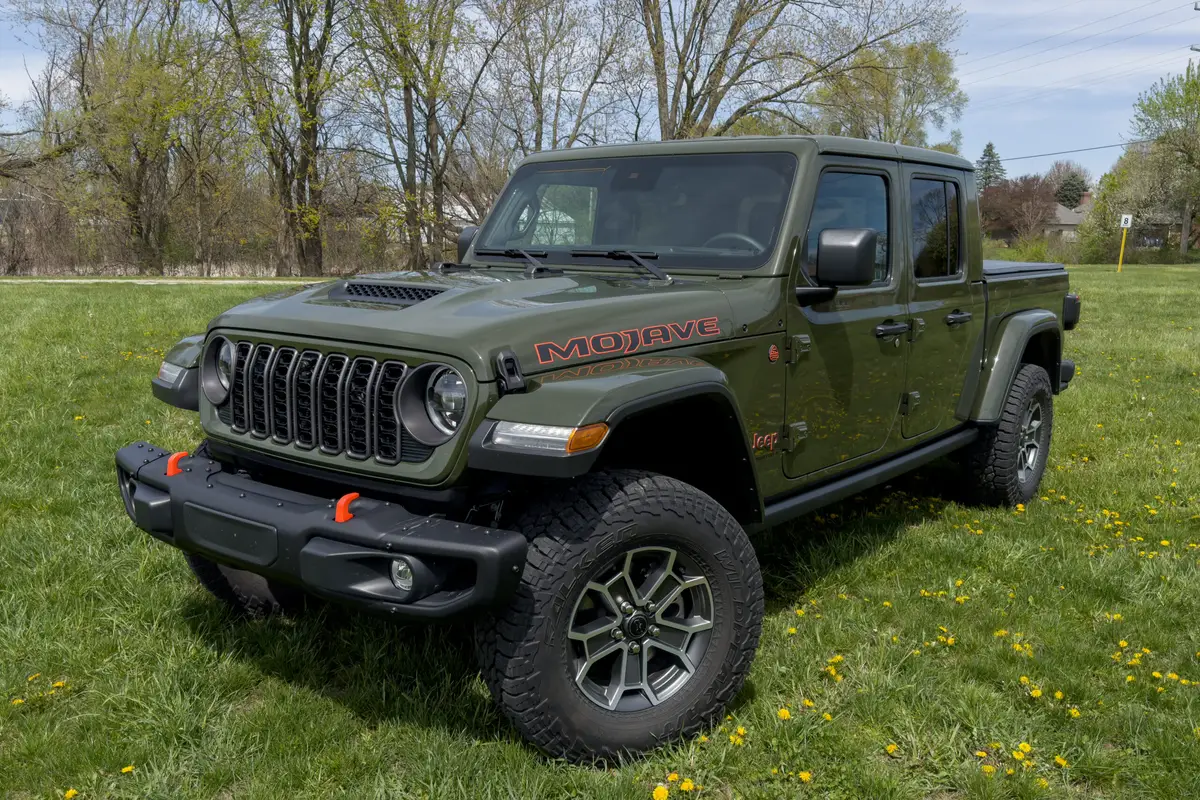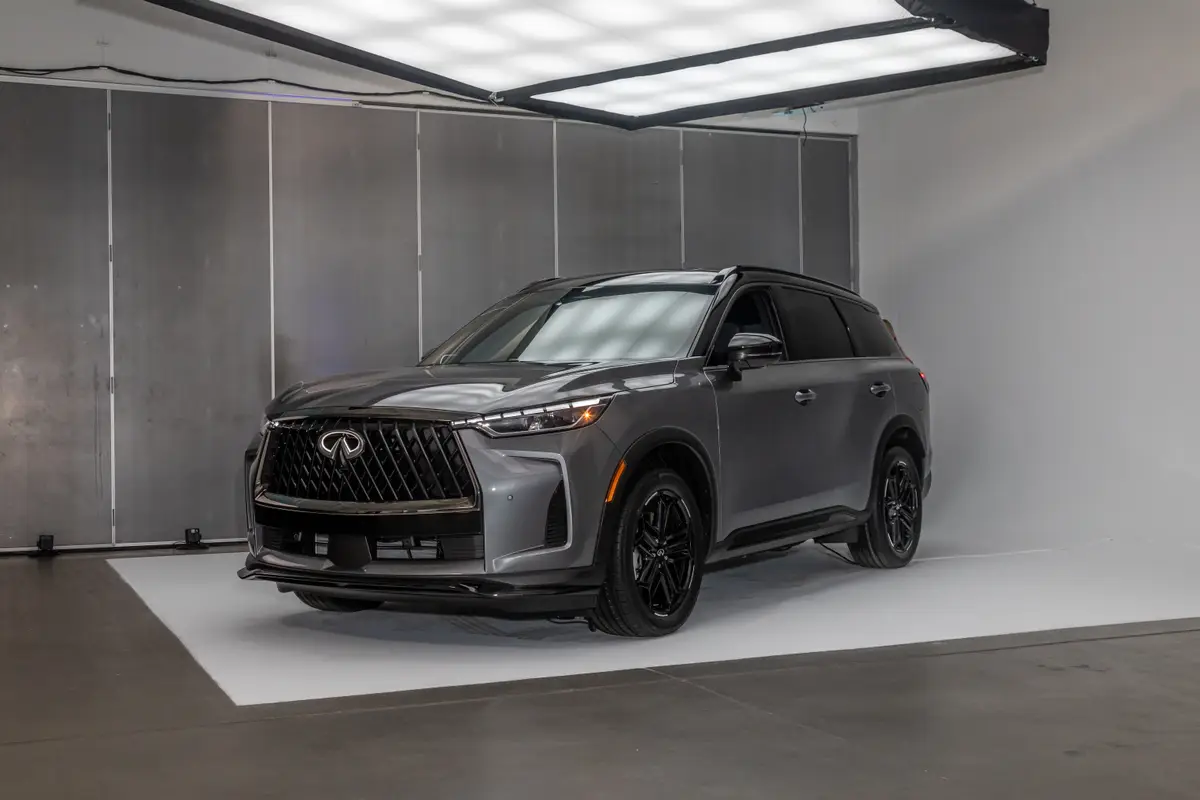chicagotribune.com's view
One day we’re driving a 1997 Plymouth Prowler and fending off the gawkers. The next we’re behind the wheel of a 1997 Toyota Camry and, for the 300 miles between Detroit and Chicago, we’re invisible.
Pull into the driveup at a fast-food retreat along Interstate Highway 94 and, rather than bid “welcome,” the voice behind the microphone asks, “Anyone there?”
Camry is one of a handful of vehicles that provide a barometer of how well the automaker and the industry are doing.
Camry is Toyota’s best-selling car and is within a few units of becoming the best-selling car in the industry.
As goes Camry, so goes Toyota, and as goes Toyota, so goes the Japanese faction of the U.S. auto industry.
To cement its importance, Toyota for 1997 brings out a new Camry, a redesigned and re-engineered sedan.
Toyota says that in clinics in which consumers were shown the vehicle years before production, the folks went absolutely wild over the sporty image of the new midsize family sedan.
We can only assume that those folks who took part in the clinics were comatose, and their attempts to regain conciousness was miscontrued as glee.
“It’s not a GTO, but it’s a lot less conservative looking than the previous model,” said Donald Esmond, a Toyota vice president and large-car platform manager for Camry.
Camry is a styling yawner, but then people don’t buy a Camry because it makes a fashion statement, they purchase one because it works and has proven to be reliable, durable and dependable. Once you buy one, you don’t see the dealer for several years, when it’s time to buy a new version. Rather than trade the old one in, you hand it down through the family. After all, it has only 90,000 miles on it and should provide a couple more years of service.
We tested the ’97 Camry, the fourth generation since it appeared here in 1983 as a compact economy model.
Camry is a friendly, pleasant, predictable machine that offers no surprises and little excitement. Toyota insists Camry buyers don’t want the radical sheet metal of a Ford Taurus, which officials describe as “melted chocolate” because the wrapping isn’t as important as the prize inside.
Planned obsolesence, they say, used to refer to the fact that after about three years, you had to buy a new car because the engine/brakes/transmission on the old one were on their last legs.
But planned obsolesence also refers to the fact that once you unveil radically new sheet metal, the former machine looks very old and that doesn’t provide value for the dollar.
Camry for 1997 comes in CE (replacing the DX), LE and XLE sedans. The coupe and wagon have been dropped, having accounted for only 5 and 2 percent of sales, respectively.
It comes with the same 2.2-liter, 4-cylinder and 3-liter, V-6 as in the past, though horsepower has been bumped up to 133 from 125 on the 4 and 194 from 188 on the V-6. The V-6 also was given a bit more low-end torque for quicker off-the-line or into-the-passing-lane power. In doing so mileage fell to 19 m.p.g. city/26 m.p.g. highway from 20/29.
We tested all three models at a preview of the lineup here, but drove an XLE V-6 back to Chicago. We’ll review the CE and LE extensively later. For now, suffice it to say the 2.2 tends to groan at hard acceleration and seems to need propping up on its sidewalls in a sharp corner or turn with its smaller 14-inch tires (15-inch all other Camrys). But the cloth seats are not only good looking, they’re more comfortable and supportive than those finished in leather in the XLE.
As for the XLE, the V-6 is surprisingly quiet. When you kick the accelerator, the engine gains momentum smoothly without lurching forward and without gasping for breath. We cruised with traffic on I-94 at 75 m.p.h. and like that battery-frenzied bunny, the 3-liter, V-6 just k ept going and going without skipping a beat.
Toyota estimates that 20 percent of all ’97 Camrys will be purchased with the V-6, up from 15 percent for 1996, when some buyers chose the 4 to save money. Camry prices have gone down an average of about $400 for ’97, and the automaker figures that will make the V-6 more appealing.
The suspension tends to be on the soft side, but not cushy. When it strikes bumps in the road, it rebounds so quickly you don’t get a lot of jolting or jarring. The wheelbase has been extended 2 inches to move occupants a bit farther from the point of impact with the road. You also sit fairly flat in lateral maneuvers on winding roads or when pulling out to pass without lean or roll that makes you fight the wheel to get back into your lane.
Dual air bags are standard in all models, ABS standard in all but the base CE (a $550 option). We didn’t have to enlist ABS in any panic reactions, but felt the regular brakes were a shade slow to respond to pedal pressure. Kudos to Toyota for making ABS, previously a $1,000 option, standard for 1997.
However, we should note that Toyota officials at a preview here said that though Camry prices have gone down about $400, the decrease is more like $800 when accounting for making ABS standard. Hmm. That means ABS cost Toyota about $400 and it was charging customers $1,000..
Besides ABS, another smart move was to add an integrated child-safety seat in back as a $125 option for the first time. Corolla also will get the seat for ’97.
The seat serves the family with a young child or the grandparents taking that child for the day without the burden of buying and trying to fasten one of those aftermarket seats. The Toyota seat flips out of hiding when needed. The added benefit of an integrated child seat is that it encourages parents to put the child in back, the safest location.
Also new for 1997, traction control is available as an option (except the CE). The added peace of mind is worth the $300 cost. Toyota’s system applies the brake to the slipping wheel as well as reduces fuel flow to keep the vehicle under control on wet or snow-covered pavement.
You’ll also note that the pillars along the windshield are thickly padded to meet a 1999 federal standard to increase cabin cushioning to help occupants better withstand an impact.
Other noteworthy changes for ’97 include a 30 percent larger glovebox (yet a slightly smaller trunk to provide more rear-seat legroom), the addition of rear-seat dual cupholders, a tissue holder in the center console and an eyeglass holder in the roof liner and, for the first time, the V-6 is an option in the base CE model.
The CE is the only model offering a 5-speed manual and will be available in a special sport version in the spring.
The gripes we had were with the optional $1,000 leather seats that don’t provide as much support, warm weather coolness or cool weather warmth as the base cloth seats.
Also, when you squirt the washers to erase what’s left of the bugs that once roamed I-94, the water tends to stay trapped momentarily in the wipers and then crawl up the glass while you drive. It takes a few more swipes with the wipers to remove all water.
Standard equipment includes power brakes (four-wheel discs) and steering, power color-keyed mirrors/bumpers/bodyside moldings, antenna fixed into the rear glass, digital clock, intermittent wipers, AM/FM radio with cassette, air conditioning, power windows/door locks, cruise control, tilt wheel, remote keyless entry, split fold-down rear seats for access to the trunk, dual lighted vanity mirrors and a power plug for accessories.
For 1997 Toyota reportedly took about $1,500 out of the cost to build and equip Camry to effect that $400 average price cut. Prices range from $16,398 for a CE ($19,248 with V-6) to $19,868 for an LE ($2 2,168 with V-6) to $21,808 for an XLE ($24,018 with V-6).
Some refer to it as decontenting, which usually means making standard equipment optional to reduce the sticker. Esmond insists decontenting was in “don’t see, feel, smell or taste” items that consumers won’t notice.
For example, the powermast antenna was replaced by one fixed into the rear window to reduce wind noise and improve reception. The savings was $20 per car. And nickel-plated door panel clips were replaced by painted metal ones at a savings of $2.40 per car. And the lightbulb sockets imported from Japan at 60 cents each were replaced by ones that cost 5 cents.
“If that’s decontenting, I’m guilty as charged,” Esmond said.
After having driven the top-of-the-line 1997 Toyota Camry XLE sedan (Cartalk, Sept. 29) with its V-6 engine, we now have tested the mid-level and top-selling Camry LE with 4-cylinder.
The difference, as expected, is a bit more engine commotion when taking off from the line and a little less power when the line starts to lead uphill.
Camry has been restyled (hard to prove the designers were awake when they did this car) for the 1997 model year and the base 2.2-liter, 4-cylinder engine has received a modest power boost to 133 h.p. from 125 while the 3-liter,V-6 is rated at 194 h.p. versus 188 on the previous model.
For the smoothest, quietest, peppiest performance, opt for the more potent V-6. For optimum fuel economy, the 4-cylinder is the choice. It’s rated at 23 miles per gallon city/30 m.p.g. highway teamed with 4-speed automatic, and the V-6 is rated at 19/26.
LE base price is $19,868 with the 4-cylinder, $22,168 if you choose the V-6. Dual air bags are standard and for the first time ABS is, too. Traction control is available for the first time as a $300 option, worth the price for anyone venturing onto snowy or rain-soaked roads.
Also, parents and grandparents will find an optional integrated rear child safety seat available for the first time at $125. The subcompact Toyota Corolla gets the optional seat, too.
>> 1997 Toyota Camry XLE Wheelbase: 105.2 inches Length: 188.5 inches Engine: 3-liter, 194-h.p., V-6 Transmission: 4-speed automatic EPA mileage: 19 m.p.g. city/26 m.p.g. highway Base price: $24,018 Price as tested: $27,693. Includes $1,005 for leather trim/seats/headrests/door panels/shift knob; $1,000 for power tilt/slide moonroof; $1,195 for premium sound system with cassette and six speakers; $145 for carpet/cargo mats; $300 for traction control; $30 for dual heated power outside mirrors. Add $420 for freight. Pluses: Smooth, quiet ride thanks in part to 2-inch longer wheelbase and smooth, quiet performance with a 6-h.p. boost for V-6. Dual air bags and ABS (had been a $1,000 option) stan dard, and traction control now available as an option. Reputation for long ownership with minimum trips back to the dealer. First time for integrated child safety seat in back. Roof pillars padded to meet 1999 federal standard. Minuses: Save the dough and go with the more comfortable cloth seats rather than leather. To improve off-the-line performance, the V-6 was retuned but sacrificed 1 m.p.g. in the city, 3 m.p.g. on the highway. A styling yawner. Water from washers likes to stay and crawl over the windshield. Pricey. >>
Latest news



